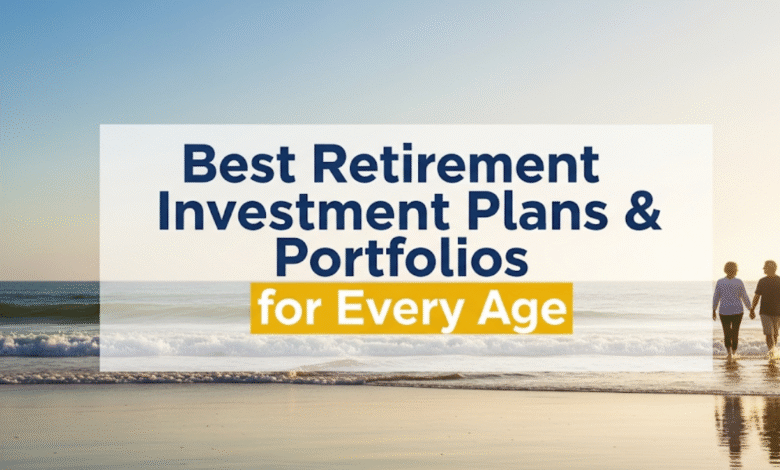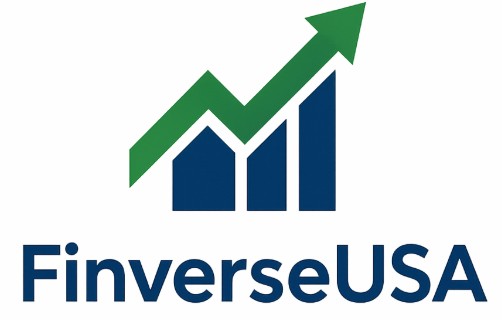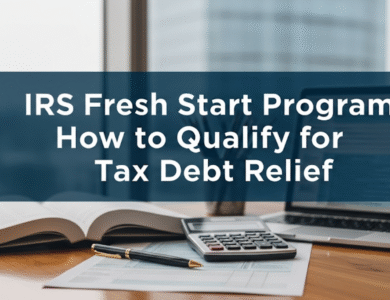
Best Retirement Investment Plans & Portfolios for Every Age
Planning for retirement isn’t a one-size-fits-all approach. Whether you’re a young professional just starting your career or a senior looking for the best retirement investment plans for seniors USA, your investment strategy should match your age, goals, and risk tolerance. This comprehensive guide will walk you through the most effective retirement investment strategies for every stage of life.
The key to successful retirement planning lies in understanding that your investment approach should evolve as you age. What works for a 25-year-old won’t necessarily be the right choice for someone seeking the best retirement portfolio for 65-year-old investors. Let’s explore how to build wealth at every age and ensure your golden years are truly golden.
Smart Investment Strategies for Young Adults (20s-30s)
Best Retirement Plans for Young Adults
When you’re in your 20s and 30s, time is your greatest asset. The best retirement plans for young adults focus on aggressive growth and taking advantage of compound interest over decades.
Top Investment Options:
• 401(k) Plans with Employer Matching: Always contribute enough to get the full company match – it’s free money • Roth IRA: Pay taxes now while you’re in a lower tax bracket • Target-Date Funds: Automatically adjusts your portfolio as you age • Low-Cost Index Funds: Broad market exposure with minimal fees • Growth Stocks and ETFs: Higher risk, higher potential returns
Recommended Portfolio Allocation:
- 90% Stocks (mix of domestic and international)
- 10% Bonds
- Emergency fund in high-yield savings
Young adults should focus on maximizing contributions to tax-advantaged accounts. The IRS contribution limits for 2024 are $23,000 for 401(k) plans and $7,000 for IRAs. Starting early allows you to harness the power of compound growth over 30-40 years.
Key Strategies for Millennials
- Automate Your Savings: Set up automatic transfers to retirement accounts
- Increase Contributions Annually: Boost your savings rate by 1% each year
- Don’t Fear Market Volatility: Short-term dips don’t matter when you have decades to recover
- Prioritize High-Growth Investments: Focus on stock-heavy portfolios
Middle-Age Investment Approaches (40s-50s)
Balancing Growth and Stability
As you enter your 40s and 50s, it’s time to shift from pure growth to a more balanced approach. You still have 15-25 years until retirement, but you need to start thinking about capital preservation alongside growth.
Portfolio Adjustments:
• Reduce Stock Allocation: Move from 90% to 70-80% stocks • Increase Bond Holdings: Add 20-30% bonds for stability • Diversify Internationally: Include emerging markets and developed international funds • Consider Real Estate: REITs can provide income and inflation protection
Best Investment Vehicles for Middle Age:
- Maximize 401(k) Contributions: Take advantage of catch-up contributions at age 50
- Traditional and Roth IRA Mix: Diversify your tax strategy
- Health Savings Account (HSA): Triple tax advantage for retirement healthcare costs
- Taxable Investment Accounts: Additional savings beyond retirement account limits
Asset Allocation Strategy
| Age Range | Stocks | Bonds | Other Assets |
|---|---|---|---|
| 40-45 | 80% | 15% | 5% |
| 46-50 | 75% | 20% | 5% |
| 51-55 | 70% | 25% | 5% |
Pre-Retirement Planning (55-65)
Best Retirement Portfolio for 60-Year-Old Investors
The decade before retirement is crucial for fine-tuning your strategy. The best retirement portfolio for 60-year-old individuals should focus on preserving wealth while still allowing for some growth.
Key Investment Principles:
• Reduce Volatility: Shift to more conservative investments • Maintain Some Growth: Don’t abandon stocks entirely • Build Cash Reserves: Keep 1-2 years of expenses in cash • Focus on Quality: Choose blue-chip stocks and high-grade bonds
Recommended Portfolio for 60-Year-Olds:
- 60% Stocks (emphasis on dividend-paying stocks)
- 35% Bonds (mix of government and corporate bonds)
- 5% Cash and cash equivalents
Catch-Up Contribution Strategies
At age 50 and beyond, you can make additional “catch-up” contributions:
- 401(k): Additional $7,500 (total $30,500 in 2024)
- IRA: Additional $1,000 (total $8,000 in 2024)
These extra contributions can significantly boost your retirement savings in your final working years.
Best Retirement Investment Plans for Seniors USA (65+)
Best Retirement Portfolio for 65-Year-Old Retirees
Once you reach 65 and enter retirement, your focus shifts from accumulation to preservation and income generation. The best retirement portfolio for 65-year-old investors prioritizes stability and regular income while maintaining some growth potential to combat inflation.
Core Investment Principles for New Retirees:
• Income-Focused Strategy: Prioritize dividends and interest payments • Capital Preservation: Protect your principal investment • Inflation Protection: Maintain purchasing power over time • Liquidity: Easy access to funds for unexpected expenses
Recommended Asset Allocation:
- 50% Stocks (dividend-focused)
- 40% Bonds (mix of government and corporate)
- 10% Cash and alternatives
Where to Invest Retirement Money for Monthly Income
Finding reliable monthly income is a top priority for retirees. Here are the best options:
High-Yield Income Investments:
- Dividend-Paying Stocks: Companies with long histories of dividend payments
- Bond Ladders: Staggered maturity dates provide regular income
- Treasury Inflation-Protected Securities (TIPS): Protection against inflation
- Real Estate Investment Trusts (REITs): Monthly or quarterly dividend payments
- Certificate of Deposits (CDs): Guaranteed returns with FDIC protection
- Immediate Annuities: Convert lump sum into guaranteed monthly payments
Best Investment Mix for New Retirees
| Investment Type | Percentage | Purpose |
|---|---|---|
| Dividend Stocks | 30% | Growth and income |
| Government Bonds | 20% | Stability |
| Corporate Bonds | 20% | Higher yield |
| REITs | 10% | Inflation protection |
| Cash/CDs | 10% | Emergency fund |
| International Stocks | 10% | Diversification |
Advanced Retirement Strategies for 70+ (Best Retirement Portfolio for 70-Year-Old)
Best Retirement Portfolio for 70-Year-Old and Beyond
As you enter your 70s, the best retirement portfolio for 70-year-old investors becomes even more conservative. At this stage, you’re focused on preserving wealth and ensuring your money lasts throughout retirement.
Key Adjustments for 70+ Investors:
• Increase Bond Allocation: Move to 50-60% bonds • Reduce Stock Exposure: Lower to 30-40% stocks • Focus on Quality: Blue-chip stocks and high-grade bonds only • Consider Longevity: Plan for potentially 20+ years in retirement
Best Retirement Portfolio for 70-Year-Old Woman
Women often face unique retirement challenges, including longer life expectancy and potential gaps in earnings due to caregiving responsibilities. The best retirement portfolio for 70-year-old woman should account for these factors:
Special Considerations:
- Longer Time Horizon: Women typically live 2-3 years longer than men
- Healthcare Costs: Higher lifetime medical expenses
- Social Security Optimization: Understand spousal and survivor benefits
- Conservative Approach: Focus on guaranteed income sources
Recommended Portfolio:
- 35% Dividend-paying stocks
- 50% Bonds and fixed income
- 15% Cash and guaranteed products
Top Retirement Plan Companies to Consider
Best Retirement Plan Companies
Choosing the right financial institution is crucial for your retirement success. Here are the best retirement plan companies based on fees, investment options, and customer service:
Leading 401(k) Providers:
- Fidelity: Low-cost funds and excellent customer service
- Vanguard: Rock-bottom fees and investor-friendly approach
- Charles Schwab: Comprehensive investment options
- T. Rowe Price: Strong target-date fund options
Top IRA Providers:
• Vanguard: Lowest expense ratios in the industry • Fidelity: Zero-fee index funds available • Charles Schwab: No account minimums • E*TRADE: User-friendly platform with research tools
For more detailed information about retirement planning strategies, visit FinVerse USA for comprehensive financial guidance.
Creating Your Age-Appropriate Investment Strategy
The Rule of Thumb Approach
A simple formula many financial advisors use is: 100 minus your age equals your stock percentage. However, with longer life expectancies, many experts now suggest 110 or 120 minus your age.
Examples by Age:
Age 30: 90% stocks, 10% bonds Age 50: 70% stocks, 30% bonds
Age 65: 55% stocks, 45% bonds Age 75: 45% stocks, 55% bonds
Customizing Your Portfolio
Remember that these are general guidelines. Your personal situation may require adjustments based on:
- Risk tolerance
- Health status
- Other income sources (pensions, Social Security)
- Family financial obligations
- Market conditions

Common Retirement Investment Mistakes to Avoid
Critical Errors That Can Derail Your Retirement
- Starting Too Late: The biggest mistake is not starting early enough
- Being Too Conservative Early: Missing out on growth in your 20s and 30s
- Panic Selling: Making emotional decisions during market downturns
- Neglecting Inflation: Not accounting for rising costs over time
- Putting All Eggs in One Basket: Lack of diversification
- Ignoring Fees: High fees can eat away at returns over time
- Not Rebalancing: Failing to adjust portfolio as you age
Smart Strategies for Success
• Regular Reviews: Assess your portfolio at least annually • Professional Guidance: Consider working with a financial advisor • Stay Informed: Keep up with changes in tax laws and contribution limits • Be Patient: Stick to your long-term strategy despite short-term market volatility
Tax-Efficient Retirement Planning
Understanding Tax-Advantaged Accounts
Traditional Accounts (Tax-Deferred):
- 401(k), 403(b), Traditional IRA
- Tax deduction now, pay taxes in retirement
- Required Minimum Distributions (RMDs) at age 73
Roth Accounts (Tax-Free):
- Roth IRA, Roth 401(k)
- No tax deduction now, tax-free withdrawals in retirement
- No RMDs for Roth IRAs
Tax Strategy by Age:
- 20s-30s: Focus on Roth accounts (lower tax bracket)
- 40s-50s: Mix of traditional and Roth
- 60s+: Strategic withdrawals to manage tax bracket
Healthcare and Long-Term Care Planning
Planning for Healthcare Costs in Retirement
Healthcare expenses are often the largest unexpected cost in retirement. According to recent studies, a 65-year-old couple may need $300,000+ for healthcare costs throughout retirement.
Healthcare Investment Strategies:
- Health Savings Account (HSA): Triple tax advantage
- Long-Term Care Insurance: Protection against catastrophic care costs
- Medicare Planning: Understanding coverage gaps
- Emergency Healthcare Fund: Separate from general emergency fund
Social Security Optimization
Maximizing Your Social Security Benefits
Social Security timing can significantly impact your retirement income:
Claiming Strategies:
- Age 62: Reduced benefits (as low as 75% of full benefit)
- Full Retirement Age: 100% of benefit (age 66-67 depending on birth year)
- Age 70: Maximum benefits (132% of full benefit)
Spousal Strategies:
- Coordinate claiming with spouse for maximum household benefit
- Consider survivor benefits for long-term planning
Building Your Retirement Action Plan
Step-by-Step Implementation Guide
Phase 1: Assessment (Month 1)
- Calculate your current net worth
- Estimate retirement expenses
- Determine your risk tolerance
- Review existing accounts and investments
Phase 2: Strategy Development (Month 2)
- Set specific retirement goals
- Choose appropriate asset allocation
- Select investment accounts and providers
- Create automatic savings plan
Phase 3: Implementation (Month 3+)
- Open necessary accounts
- Set up automatic contributions
- Begin investing according to your plan
- Establish regular review schedule
Annual Review Checklist
- [ ] Rebalance portfolio to target allocation
- [ ] Increase contributions if income has grown
- [ ] Review and adjust risk tolerance
- [ ] Check for changes in tax laws
- [ ] Update beneficiaries on all accounts
- [ ] Reassess retirement goals and timeline
Conclusion: Your Path to Retirement Success
Creating the perfect retirement portfolio isn’t about finding a magic formula – it’s about understanding your needs at each life stage and adjusting accordingly. Whether you’re looking for the best retirement plans for young adults or seeking the best retirement investment plans for seniors USA, the key is to start where you are and make consistent progress.
The best retirement portfolio for 65-year-old investors will look very different from what works for someone in their 30s, and that’s exactly how it should be. Your investment strategy should evolve as your life changes, always keeping your end goal in sight: a comfortable, secure retirement.
Remember that successful retirement planning is a marathon, not a sprint. Start early if you can, but if you’re starting later, don’t let that discourage you. Every dollar you save and invest today is a dollar working for your future self.
The most important step is the first one – begin today, stay consistent, and let time and compound interest work their magic. Your future self will thank you for the disciplined approach you take today in building your retirement security.
Whether you’re seeking advice on where to invest retirement money for monthly income or looking for the best retirement plan companies, the foundation remains the same: diversification, appropriate risk management, and a long-term perspective will serve you well throughout your retirement journey.

